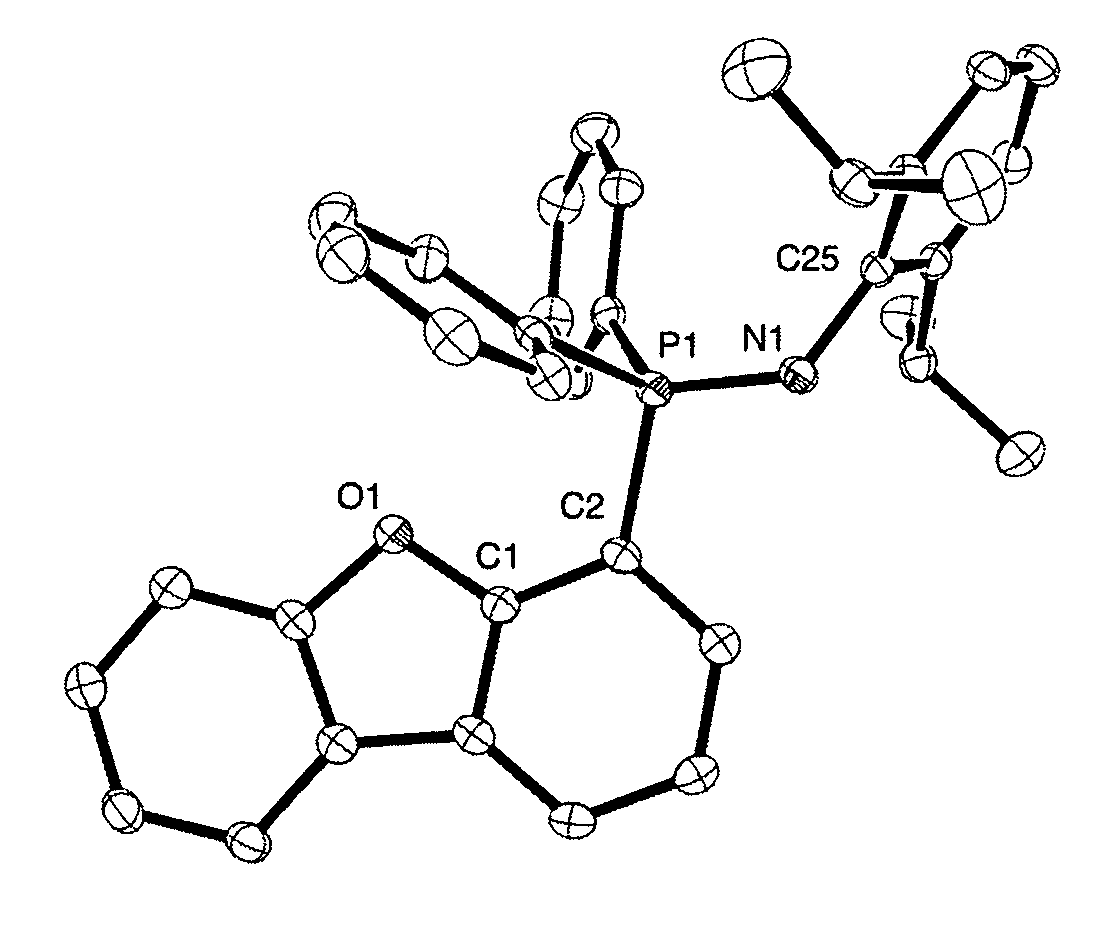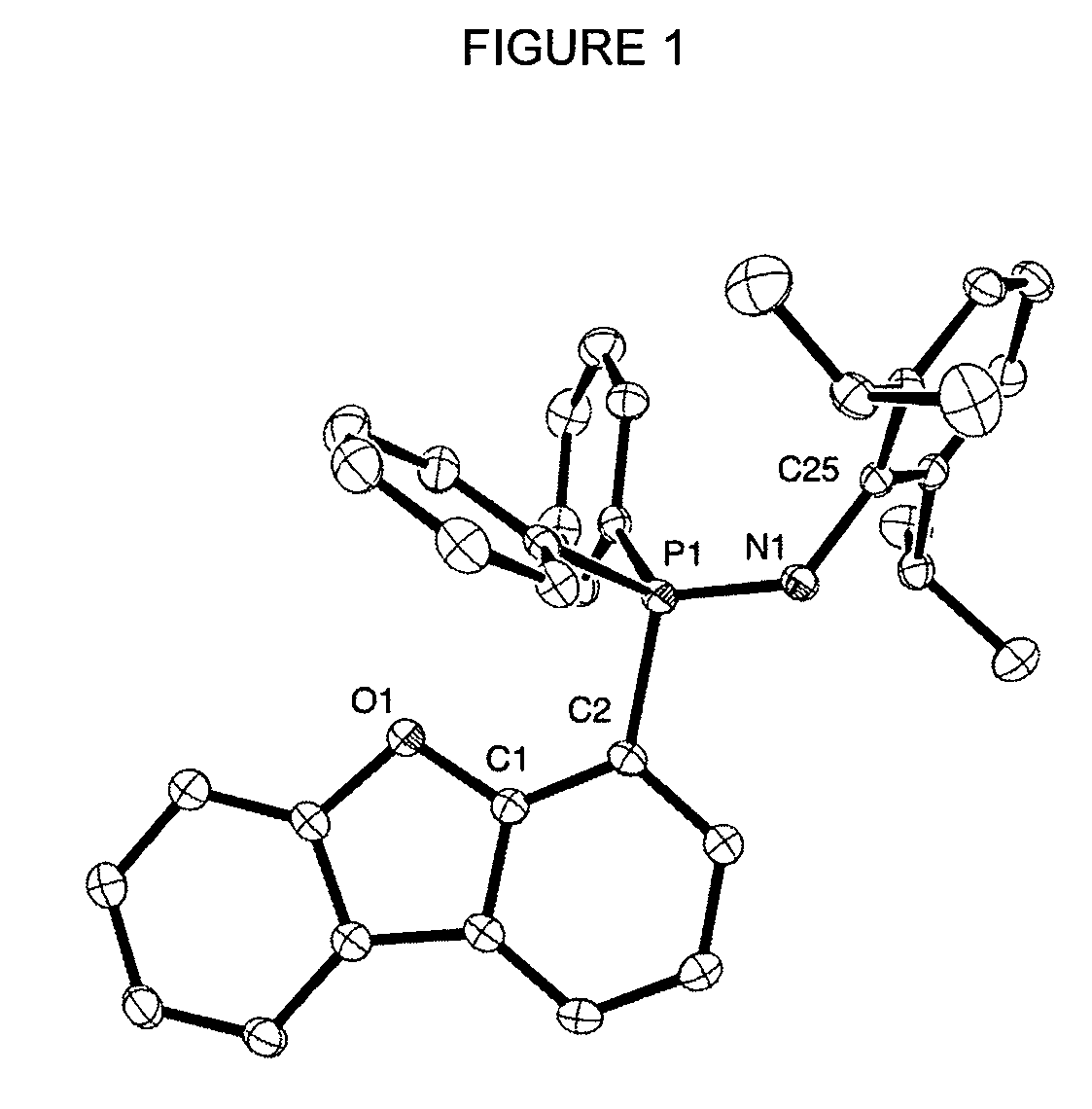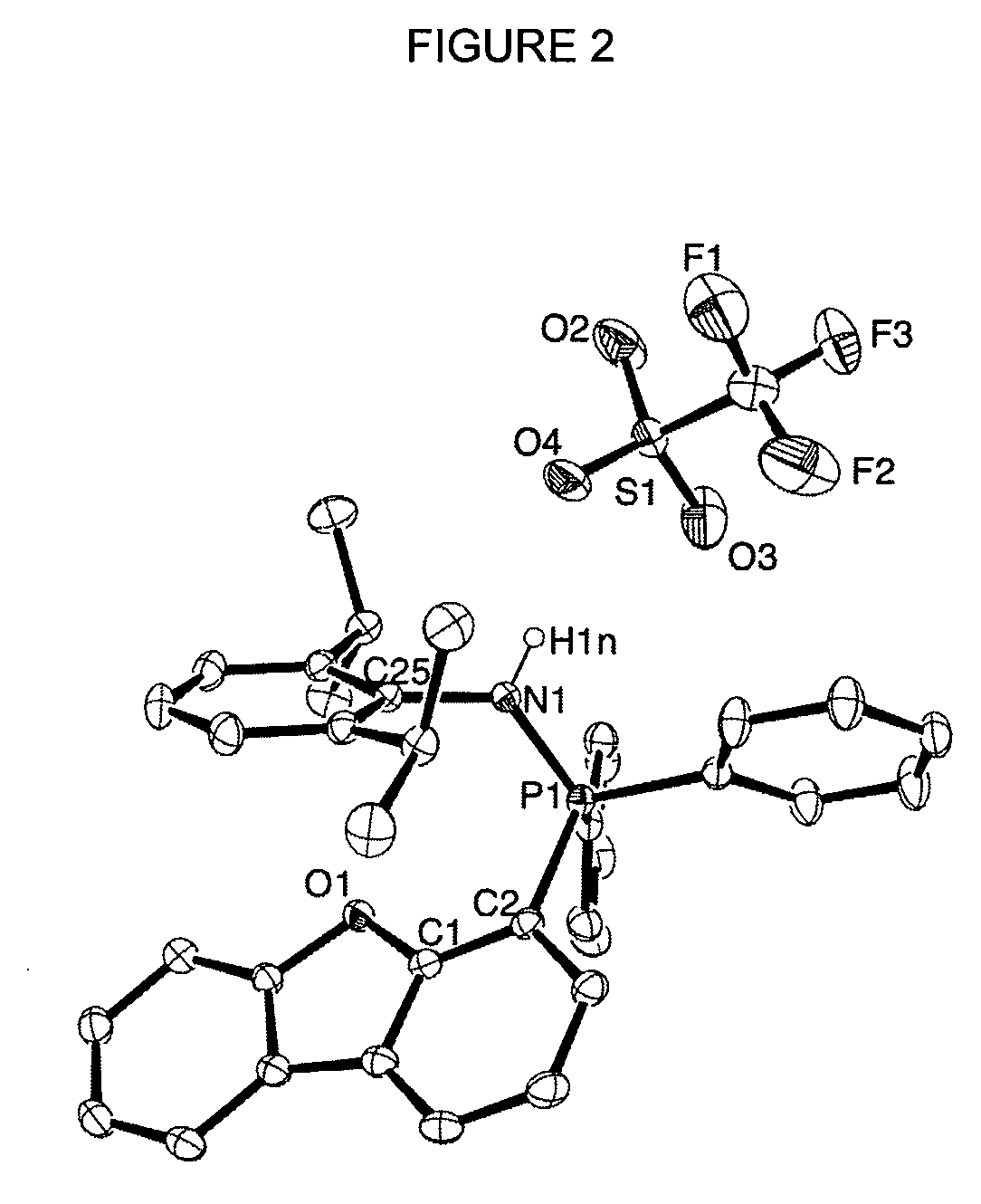Catalysts for the polymerization of cyclic esters
- Summary
- Abstract
- Description
- Claims
- Application Information
AI Technical Summary
Benefits of technology
Problems solved by technology
Method used
Image
Examples
example 1
Synthesis of 4-(PPh2)dibenzofuran (1)
[0084]
[0085]Compound (1) has been prepared according to a modified literature procedure.5 A 2-neck 100 mL round-bottom flask attached to a swivel frit apparatus was charged with dibenzofuran (1.03 g 6.12 mmol) and 35 mL of Et2O. The vessel was cooled to −78° C. and 1.7M tBuLi in pentane (4.0 mL, 6.8 mmol) was subsequently added dropwise. A white precipitate was noted within minutes. The suspension was allowed to stir for 1.5 hours at −78° C. and then warmed slowly to room temperature with stirring over an additional 1 hour. The system was cooled to −78° C. and neat CIPPh2 (6.5 mL, 37 mmol) was added over 5 minutes. The reaction mixture was allowed to gradually warm to room temperature over 12 hours yielding a white suspension. Et2O was removed under vacuum and approximately 50 mL of pentane was added by vacuum transfer. The resulting white suspension was sonicated for 5 minutes and filtered, yielding a white solid mixture of (PPh2C4H3)2C4O and Li...
example 2
Synthesis of the Ligand 4-(DippNPPh2)C12H7O (2)
[0086]
[0087]A 2-neck 100 mL round-bottom flask attached to a swivel frit apparatus was charged with a mixture of (1) (1.22 g, 3.45 mmol) and residual LiCl. Approximately 35 mL of toluene was transferred to the reaction vessel. Excess (2,6-di-isopropyl)-phenyl-azide (DippN3) (0.463 g, 2.28 mmol) was added and the reaction mixture was allowed to stir under Ar at room temperature. Within minutes of initiating the reaction, evolution of N2 was observed and the solution turned light yellow. The reaction mixture was stirred for 12 hours at room temperature producing a cloudy yellow solution. Filtration to remove residual LiCl yielded a clear yellow solution, which gave a crude yellow oily substance upon removal of toluene in vacuo. Approximately 60 mL of pentane was added by vacuum transfer to the crude product, and the mixture was vigorously stirred for two hours. Filtration of the resulting suspension yielded the product as a white powder w...
example 3a
Synthesis of Cationic Ligand (2)+[B(C6F5)4]− (3a)
[0088]
[0089]Under an argon atmosphere, neutral ligand (2) (0.098 g, 0.186 mmol) was combined with an equivalent of the anilinium activator [HNMe2Ph][B(C6F5)4] (0.150 g, 0.187 mmol) in 2 mL of benzene. Immediately upon combining the reagents, the formation of a pale yellow oil was observed. The reaction mixture was allowed to stir for 5 minutes at room temperature, and then the benzene was decanted. The remaining oil was washed twice with pentane and dried under vacuum to generate protonated ligand (3a) as a white powder in 97% yield (0.217 g, 0.180 mmol). 1H NMR (3:1 C6D6 / C6D5Br): δ 7.84 (d, 1H, 7.8 Hz, Aromatic H), 7.61 (m, 1H, Aromatic H), 7.14-7.05 (ov m, 8H, Aromatic H) 6.96 (ov m, 5H, meta-Ph+Aromatic H), 6.90 (d, 1H, J=6.9 Hz, Aromatic H), 6.86-6.72 (ov m, 2H, Aromatic H), 6.68 (d, 2H, J=7.8 Hz, meta-Dipp), 4.96 (d, 1H, 2JHP=9.3 Hz, NH), 2.66 (sp, 2H, J=6.9 Hz, CH(CH3)2), 0.56 (d, 12H, J=6.9 Hz, CH(CH3)2). 31P{1H} NMR (1:1 C6D6 / ...
PUM
| Property | Measurement | Unit |
|---|---|---|
| reactivity | aaaaa | aaaaa |
| charge | aaaaa | aaaaa |
| chemical | aaaaa | aaaaa |
Abstract
Description
Claims
Application Information
 Login to View More
Login to View More - R&D
- Intellectual Property
- Life Sciences
- Materials
- Tech Scout
- Unparalleled Data Quality
- Higher Quality Content
- 60% Fewer Hallucinations
Browse by: Latest US Patents, China's latest patents, Technical Efficacy Thesaurus, Application Domain, Technology Topic, Popular Technical Reports.
© 2025 PatSnap. All rights reserved.Legal|Privacy policy|Modern Slavery Act Transparency Statement|Sitemap|About US| Contact US: help@patsnap.com



